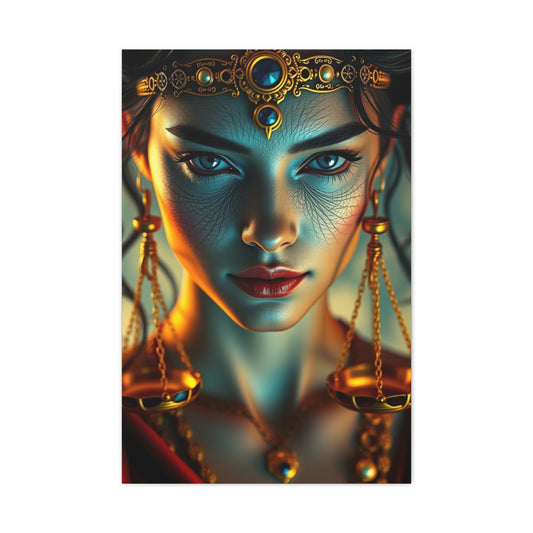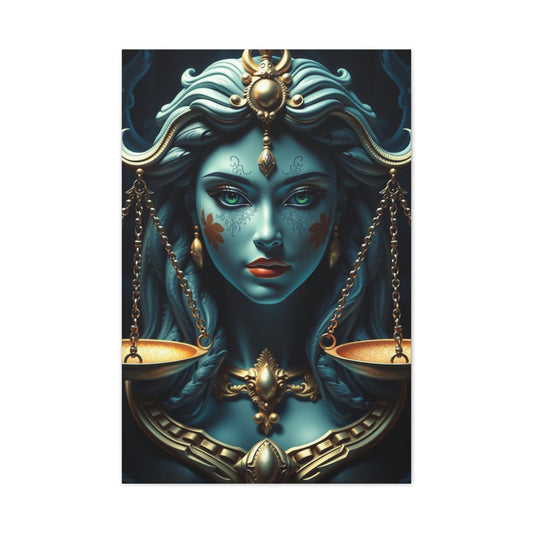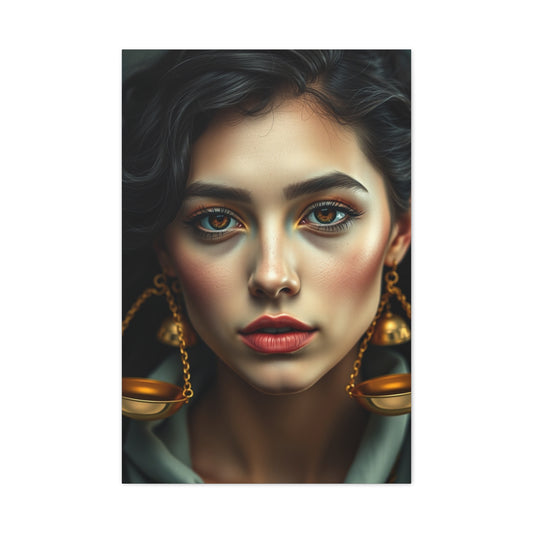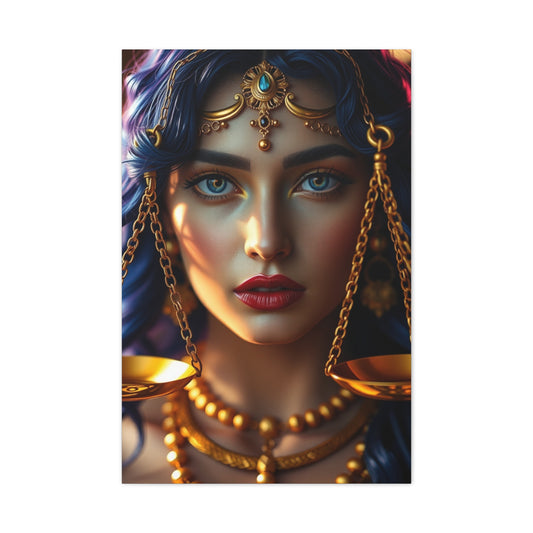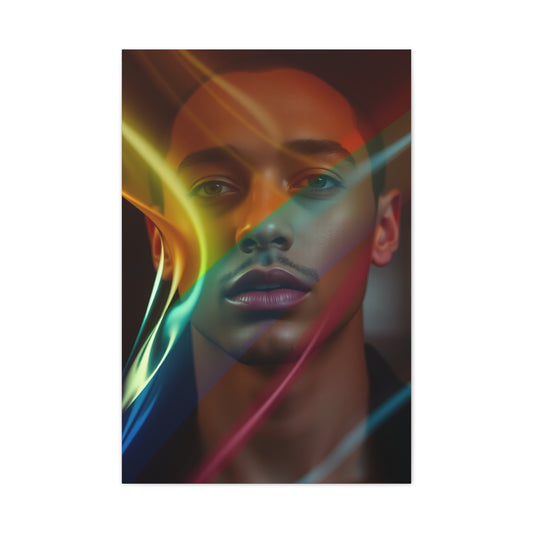Understanding Watercolour Paper Sizes: A Comprehensive Guide
When it comes to creating watercolour art, selecting the right paper is as crucial as choosing the perfect paintbrush or the most suitable pigment. The type of paper used can significantly affect the overall look, texture, and finish of a painting. Among the various factors to consider when selecting watercolour paper, the size of the sheet is of paramount importance. The size of the paper dictates not only the scope of the work but also influences the techniques an artist can employ. Watercolour paper comes in various sizes, and these sizes can vary depending on the region and the specific paper manufacturer. In this guide, we’ll explore the different paper sizes used around the world, focusing on how these sizes are categorized and their specific applications in the world of watercolour painting.
The Imperial Paper Sizes: Large Sheets for Grand Artistic Expressions
In regions such as the United States, Canada, and certain parts of the world, watercolour paper sizes are typically measured according to the Imperial system. This system, which uses inches to define paper dimensions, is the most commonly used sizing system for watercolour paper. Artists working within this system will encounter several key sizes that form the standard measurements for watercolour sheets. One of the most widely recognized sizes is the Full Imperial sheet, measuring 30 x 22 inches (approximately 76 x 56 cm). As the largest standard size, the Full Imperial sheet offers vast space for large-scale compositions and intricate works that require ample room for detailed brushstrokes and expansive scenes.
For artists who seek a slightly more manageable size, the Half Imperial sheet is an excellent choice. This size measures 15 x 22 inches (approximately 56 x 38 cm) and provides a perfect balance between space and control. Artists who prefer to work with this size often enjoy the ability to tackle relatively large projects without the overwhelming nature of a Full Imperial sheet. Whether creating sweeping landscapes or complex still-life arrangements, the Half Imperial size offers a versatile surface for a wide range of watercolour techniques.
For smaller, more intimate works, the Quarter Imperial size is a popular option. Measuring 15 x 11 inches (approximately 38 x 28 cm), the Quarter Imperial sheet provides a compact but generous surface for artists who wish to focus on more delicate compositions. This size is particularly ideal for watercolour studies, smaller sketches, or detailed, focused pieces. It offers a perfect canvas for exploring intricate textures, fine details, or the subtleties of light and shadow without feeling constrained by the size of the paper.
Many watercolour paper manufacturers provide these standard sizes, with the ability to offer custom-cut sheets for artists who prefer more flexibility. For those looking to work on smaller or uniquely sized pieces, custom-cut options make it possible to experiment with new formats while maintaining the same level of artistic freedom. It’s important to note that some paper suppliers also offer pre-stretched watercolour paper, which comes in these standard sizes, allowing artists to avoid the time-consuming process of stretching their paper.
The Full, Half, and Quarter Imperial sizes are the cornerstone of the Imperial paper system, but watercolour artists are not limited to these dimensions alone. Many artists choose to adapt these sizes by cutting or trimming sheets to suit their specific needs. Custom sizes offer endless creative possibilities, allowing artists to explore unconventional compositions and layouts. The beauty of working with the Imperial system is that it provides a consistent standard for watercolour paper while also offering flexibility for artistic experimentation.
European (ISO) Watercolour Paper Sizes: Precision and Standardization
In contrast to the Imperial system, many countries in Europe and other parts of the world use the European or ISO paper sizing system. This system is based on metric measurements and offers a highly standardized approach to paper sizes. The most common formats within the ISO system include A0, A1, A2, A3, A4, and so on, with each subsequent size being a smaller fraction of the previous one. These sizes are often used for a variety of paper types, including watercolour, and are characterized by their precise proportions.
For watercolour artists working within the European system, one of the most significant differences is the format of the sheets. The A0 size, which measures 33.1 x 46.8 inches (approximately 84 x 118 cm), is the largest sheet available and serves as the starting point for smaller sizes in the A-series. Artists who choose to work on A0-sized paper will have an ample surface to create grand, large-scale pieces that require plenty of room for expansive compositions and intricate watercolour techniques. However, A0 sheets are not the most common size used in watercolour painting, and most artists tend to work with smaller dimensions.
A1-sized paper, measuring 23.4 x 33.1 inches (approximately 59.4 x 84.1 cm), is another common size for watercolour artists working within the ISO system. The A1 sheet offers a slightly smaller surface area than the A0, but still provides ample space for large-scale works. Artists often find the A1 size to be a comfortable option when creating detailed landscapes or portraits that require a bit more room than a typical medium-sized sheet.
For those who prefer working on more moderate-sized pieces, A2 and A3 paper sizes are excellent options. The A2 size measures 16.5 x 23.4 inches (approximately 42 x 59.4 cm), while the A3 size measures 11.7 x 16.5 inches (approximately 29.7 x 42 cm). Both sizes offer a balance between size and control, making them suitable for work that is neither too large nor too small. A2 is often used for more elaborate compositions, while A3 is popular for smaller watercolour paintings, sketches, and studies.
The ISO system also offers the advantage of simplicity, as the size measurements follow a logical progression. By halving the paper size, each subsequent sheet retains the same aspect ratio, which makes it easy to scale up or down without losing the intended composition. This standardization of sizes provides consistency for artists working internationally and offers a reliable framework for selecting the right paper size for each project.
American Watercolour Paper Sizes: A Blend of Tradition and Practicality
In addition to the Imperial and ISO systems, certain regions, particularly in the United States, also offer watercolour paper sizes that combine elements of both the Imperial and ISO standards. These sizes may differ slightly from the traditional formats but are still widely used by American artists. For example, the most common size for watercolour artists in the U.S. is the 22 x 30 inches (approximately 56 x 76 cm) sheet, which is a convenient and versatile option for a wide range of projects.
This size strikes a balance between the larger Full Imperial and the more manageable Half Imperial dimensions, offering artists ample space to create detailed and intricate compositions while maintaining the flexibility to experiment with different techniques. Additionally, artists working in the U.S. can often find watercolour paper in sizes that are slightly smaller or larger than the standard Imperial dimensions, allowing for further customization of their work.
American watercolour paper sizes also tend to be readily available in pre-stretched formats, which is a great advantage for artists who want to avoid the process of stretching their paper before use. Pre-stretched watercolour paper is a convenient option for those who prefer to jump right into their creative process without having to worry about the technical aspects of preparation.
Introduction to European Paper Sizes: The ISO 'A' Series
In Europe, the metric system reigns supreme, and this is especially evident when it comes to the measurement of paper sizes. The ISO ‘A’ system, a standardized paper size format, is widely used across the continent, particularly for art supplies like watercolour paper. This system is designed around a series of sizes that progressively halve the dimensions of the paper as you move from one size to the next. For watercolour artists, the ISO 'A' series offers a broad range of paper sizes, each tailored to different artistic needs and creative aspirations. Whether you are creating an expansive landscape or a small, intricate study, the ISO 'A' sizes offer flexibility, uniformity, and consistency, making it the go-to choice for artists worldwide.
The largest size in the ISO 'A' series is A1, which measures 84.1 x 59.4 cm, or roughly 33 x 22 inches. A1 is a substantial sheet of paper that provides ample space for artists to work on large-scale pieces. This size is perfect for grand compositions where an artist wants to create sweeping brushstrokes, dramatic landscapes, or bold abstract works. Its generous dimensions allow artists to express themselves freely without feeling confined by the paper’s size. A1 is very close in size to the Full Imperial sheet but is slightly larger in its measurements, offering a bit more room to work with.
As you move down the ISO 'A' series, the sizes progressively shrink, but they maintain a logical structure where each size is exactly half the area of the one above it. The A2 size follows A1, measuring 59.4 x 42 cm (approximately 22 x 16 inches). While slightly smaller than A1, A2 still provides a significant amount of space for larger works. It is ideal for artists who enjoy working on compositions that require a certain level of grandeur but want to avoid being overwhelmed by the size of A1. A2 is commonly chosen for semi-abstract pieces or portraiture, offering just enough space to capture the subject in a larger-than-life manner without the constraints of smaller paper sizes.
The next size in the sequence is A3, which measures 42 x 29.7 cm (about 16 x 12 inches). This size is smaller yet still allows for enough creative freedom. A3 is the perfect choice for artists who prefer a more manageable canvas but still want to create detailed, focused compositions. Whether you’re working on a still life, a portrait, or a study of intricate details, A3 offers just the right balance between scale and precision. It’s a versatile size for artists who want to maintain complexity in their work but need a more compact format that is easier to handle.
Finally, A4, measuring 29.7 x 21 cm (approximately 12 x 8 inches), is the smallest of the ISO ‘A’ sizes. A4 is widely used for sketches, studies, and smaller works. For beginners and experienced artists alike, A4 offers an ideal size for experimenting with watercolour techniques, practicing brush control, and refining compositions before moving on to larger pieces. Its smaller dimensions allow for detailed, intricate work while being manageable in terms of space and handling. Many artists turn to A4 when creating quick studies or working on smaller, more intimate works.
The Progression and Uniformity of the ISO ‘A’ System
One of the standout features of the ISO ‘A’ paper series is the uniformity of its sizing system. Each size is designed so that it is exactly half the size of the next largest, resulting in a consistent progression from A1 down to A4. This simplicity makes it easy for artists to scale their work up or down as needed, whether they are transitioning from a larger piece to a smaller one or vice versa. Artists can maintain consistent proportions across multiple pieces, which is particularly useful when working on a series of related works or preparing pieces for an exhibition.
This uniformity also plays a practical role when it comes to framing and presentation. Since the sizes are standardized, finding frames that fit your artwork becomes significantly easier. The A-series paper sizes also make it simple for artists to cut their paper to the desired size without worrying about complicated measurements. This ease of use has contributed to the widespread adoption of the ISO ‘A’ system across Europe and beyond, as it ensures that artists have access to materials that are not only high-quality but also convenient and predictable.
The flexibility offered by the ISO ‘A’ system also makes it an ideal choice for artists working in different mediums and styles. Whether you’re creating large-scale watercolours or small, detailed pencil sketches, the A-series sizes provide options that cater to every artistic need. Larger sizes like A1 and A2 allow for expansive works, while smaller sizes like A3 and A4 offer more controlled spaces for precision and detail. This versatility is particularly valuable for artists who prefer to work in various styles or mediums, as the consistent sizing enables them to experiment with different approaches without the constraints of irregular or inconsistent paper dimensions.
In addition, the ISO ‘A’ paper sizes are designed to offer optimal proportions for aesthetic purposes. The aspect ratio of the sizes remains consistent throughout the series, meaning that the proportions of each size are visually harmonious. This allows artists to focus more on their creative process rather than worrying about whether the size of their paper will affect the overall look and feel of their work. For artists who value the balance between form and content, the ISO ‘A’ system offers a reliable and aesthetically pleasing solution.
Why the ISO ‘A’ System is the Ideal Choice for Watercolour Artists
Watercolour artists often seek paper that provides both durability and texture, and the ISO ‘A’ system caters to these needs with its wide range of sizes and the high quality of paper available in these formats. Since the ISO ‘A’ paper series is so popular in European art supply stores, artists can easily find watercolour paper in these sizes, which are designed to work well with watercolour paints and other mediums. Many manufacturers offer papers in these dimensions, ensuring that artists have access to the same high-quality materials, regardless of where they are located.
Larger sizes like A1 and A2 are particularly beneficial for watercolourists who enjoy creating dramatic, expansive works that require ample space for large brushstrokes and fluid washes. These sizes allow for an open, free-flowing painting process, where the artist has plenty of room to work with watercolour’s natural tendencies to spread and flow. The larger dimensions give the artist room to create the gradual transitions and soft blending that watercolours are known for, which can be particularly challenging on smaller sheets.
On the other hand, smaller sizes like A3 and A4 are perfect for artists who prefer to work on smaller, more intimate compositions. Watercolour techniques that require fine control, such as delicate washes, intricate detail, and layering, are well-suited to these sizes. A3 and A4 provide a manageable surface that allows artists to focus on precision and control while still achieving the depth and vibrancy that watercolours can offer. Smaller sizes also make it easier for artists to experiment with various techniques without committing to a large, expensive sheet of paper.
In actuality, the ISO ‘A’ paper sizes provide watercolour artists with an array of options that accommodate a wide range of creative expressions. From the grand, expansive nature of A1 to the intimate, controlled space of A4, each size serves a specific purpose, allowing artists to create works that are as unique as their artistic vision. The consistency and flexibility of the ISO ‘A’ system make it a staple for watercolour artists in Europe and beyond, offering both practical benefits and artistic possibilities. By choosing the right size for their work, artists can take full advantage of the paper's potential, creating watercolour masterpieces that are not only visually stunning but also technically proficient.
Understanding American Paper Sizes for Watercolour Art
Watercolour artists in the United States often work with paper sizes that are distinct from those commonly used in the UK and other countries. While the dimensions are measured in inches, the American system for watercolour paper sizes follows its own unique set of standards. This system, though not completely in sync with the Imperial or ISO paper formats, has become a hallmark for artists, particularly in North America. These sizes are largely influenced by historical practices, and even though they can vary slightly between manufacturers, they remain a staple for watercolour artists in the U.S.
One of the most popular sizes for watercolour paper in America is 22 x 30 inches, which is approximately 56 x 76 cm. This size is favored for large-scale works, where artists require plenty of space to fully explore their creativity. A 22 x 30-inch sheet offers the artist a generous surface area, making it ideal for detailed and expansive renderings, whether they are working on grand landscapes, intricate figurative pieces, or even abstract compositions. It bears some resemblance to the Full Imperial size, as well as the A1 size in the ISO system, though it is slightly different in proportions. This larger size offers artists the flexibility they need to develop their work without constraints, allowing them to achieve the level of detail and depth that large watercolour paintings often demand.
While the 22 x 30-inch format is common for ambitious, large-scale projects, artists also recognize the need for a more moderate sheet size for pieces that don't require such vast expanses of paper. For these purposes, 18 x 24-inch sheets are often used. This size, approximately 46 x 61 cm, strikes a perfect balance between the grandiose 22 x 30-inch paper and smaller options. It provides sufficient space for ambitious compositions, but without overwhelming the viewer or the artist. This medium-sized paper is favored by artists for works such as portraits, still life studies, and even compositions that aim to evoke drama while maintaining a manageable scale. The 18 x 24-inch size allows for bold artistic statements while providing a more intimate canvas compared to the largest available option.
Smaller American Paper Sizes for More Intimate Watercolour Works
Not all watercolour artworks require expansive paper sizes, and artists in the U.S. have a variety of smaller formats to choose from as well. When the subject matter calls for a more compact, controlled approach, smaller American-sized sheets such as 14 x 20 inches (approximately 36 x 51 cm) and 11 x 14 inches (around 28 x 36 cm) are ideal options. These sizes are commonly chosen by artists who prefer a more contained working space that still allows for detailed exploration and expressive brushwork. These sizes are especially beneficial for studies, sketches, and focused pieces, where artists might want to hone in on particular details or execute smaller-scale compositions.
The 14 x 20-inch size provides a bit more room for those who want to develop their work but prefer not to commit to the full expanse of a larger sheet. It is especially well-suited for watercolour portraits and other forms of artwork that benefit from a moderate surface area but do not need the space afforded by the 22 x 30-inch sheets. Similarly, the 11 x 14-inch sheet is popular among artists who enjoy a tighter, more compact format that still offers ample space to create meaningful watercolour works. This size is frequently used for studies and smaller compositions that allow the artist to focus on technique, texture, and color while maintaining control over their work’s final details.
These smaller formats make it easier for artists to experiment with new techniques, explore intricate brushstrokes, and create intimate compositions that can have a significant emotional impact despite their size. The compact nature of these sheets also enables watercolourists to produce works in a shorter amount of time, making them perfect for those who are exploring new concepts or practicing their craft in smaller, more focused sessions.
Pre-Cut Watercolour Paper Blocks and Pads for Artists
Another important aspect of working with watercolour paper in the United States is the availability of pre-cut blocks and pads. Many American artists prefer to purchase paper in these convenient formats, as they come with multiple sheets of the same size and weight, which eliminates the need to buy individual sheets or deal with the hassle of cutting large pieces of paper down to size. This method offers efficiency and convenience, particularly for those who prefer not to work with loose sheets of paper but still want access to various sizes depending on the project at hand.
Watercolour paper blocks are a popular choice, as they are typically bound on all four sides, which helps to keep the paper flat during the painting process. This feature is especially useful for watercolour artists, as it prevents the paper from warping or buckling under the weight of the paint and water. The fact that the sheets are pre-cut and bound together also offers artists the ease of working with multiple sheets without having to constantly cut down large rolls or full sheets of paper. With these pre-cut options, artists can focus entirely on their creative process without being distracted by paper size or the preparation of their workspace.
Moreover, watercolour pads offer a similar benefit, providing a stack of ready-to-use sheets. These pads come in a variety of sizes, from the larger sheets used for more expansive works to smaller formats for studies or sketches. The convenience of having multiple sheets of a single size ensures that artists can continue to work without interruption. Pre-cut pads and blocks are especially helpful for those who prefer the consistency of knowing that all of their sheets are uniform in size and quality, ensuring a cohesive and uninterrupted workflow. Whether for professionals or hobbyists, these pre-cut options help streamline the painting process, enabling artists to focus on their art rather than the logistics of paper preparation.
Working with pre-cut blocks and pads also offers flexibility, as artists can choose between different textures, weights, and finishes based on the desired effect for their watercolour paintings. This flexibility allows for a broad range of artistic possibilities, enabling watercolourists to experiment with different types of paper that best suit their specific style, subject matter, and technique.
Overall, American paper sizes for watercolour art offer a diverse range of options that can meet the needs of both large-scale and smaller, more intimate works. From the expansive 22 x 30-inch sheets, ideal for dramatic, detailed pieces, to the more compact 11 x 14-inch sheets that encourage precision and control, American watercolour paper sizes cater to artists of all types. The availability of pre-cut blocks and pads further enhances the convenience of working with watercolour paper, providing artists with a ready-to-use, uniform surface that allows them to concentrate on their creativity. The variety of sizes and options ensures that watercolour artists in the United States have access to the perfect paper for every artistic need, from grand, sweeping landscapes to focused, intricate compositions.
Choosing the Right Watercolour Paper Size for Your Artwork
The process of selecting the ideal watercolour paper size is often a crucial aspect of an artist’s creative journey. As every artist brings their personal touch to their work, the choice of paper size plays a fundamental role in the expression of their artistic vision. It can significantly influence the finished piece, dictating both the style and the mood of the work. The selection of paper size is, therefore, an essential decision that should align with the artist’s intent, the medium in use, and the scale of the piece they aim to create. Understanding how paper size can impact your work helps you make informed decisions that will guide the direction of your artistic exploration and final composition.
The Influence of Larger Paper Sizes
For artists with a grand vision, larger watercolour paper sizes offer the space necessary to bring expansive works to life. Sizes like Full Imperial, A1, or the standard 22 x 30-inch sheet allow for large-scale compositions that can capture sweeping vistas or intricate, large-format scenes. These larger paper sizes provide the freedom to explore intricate details, as well as the opportunity to create a more immersive, dramatic experience for the viewer. When working on a larger canvas, the artist has the room to express movement, atmosphere, and expansive elements without the constraint of size limitations.
Landscape artists, in particular, benefit from the dramatic effect of larger paper sizes. A sprawling field of golden light or the majestic grandeur of towering mountain ranges can be fully realised with the vast space provided by Full Imperial or A1 sizes. In cityscapes or architectural renderings, the freedom of a larger sheet allows for grand compositions where the artist can accurately capture the intricate details of buildings, streets, and spaces that require extensive coverage.
Beyond mere size, the scale of the paper adds a layer of depth and realism to a painting. Working with larger sheets can imbue the artwork with a sense of grandiosity and drama that smaller pieces often cannot convey. This is particularly evident when the artist intends to create a large, statement piece that can dominate a gallery wall or serve as the centrepiece of a collection. For such works, the larger paper size becomes not only a technical choice but a means of ensuring the finished piece delivers the intended emotional impact and visual grandeur.
However, the larger paper size also demands a different set of skills. Larger works require more time, commitment, and sometimes, an entire change in approach compared to working with smaller paper sizes. These pieces allow for more freedom, but they also come with the challenge of ensuring consistent technique and cohesion throughout a bigger surface. It’s essential to ensure that the paper quality, weight, and texture are suitable for such ambitious projects. The artist’s tools, too, must be chosen carefully to accommodate the larger scale.
Smaller Paper Sizes and Their Unique Advantages
While larger papers are excellent for producing expansive works, smaller sizes such as Quarter Imperial, A4, or the American 11 x 14-inch sheet offer a different set of advantages that are ideal for more focused and intimate artwork. These sizes lend themselves well to precision, fine detail, and a closer connection to the subject matter. Smaller sheets provide artists with greater control over their work, making them ideal for portraiture, still life, or any type of composition that demands sharpness and intricate detailing.
Artists who prefer to work with a fine brush or focus on delicate textures will find that smaller paper sizes provide an ideal balance between allowing enough space to work on details and preventing the overwhelming challenge of managing a larger surface. These sizes also promote a more intimate and personal style, allowing the artist to connect more deeply with the piece without feeling distracted or overwhelmed by the scale of the paper.
For beginners, working with smaller sheets offers an opportunity to experiment and develop techniques without the pressure of committing to a large format. These smaller surfaces are ideal for testing out new ideas, practicing watercolour techniques, or experimenting with compositions before scaling up to more ambitious projects. The smaller size allows the artist to freely explore various styles and methods without the concern of wasting resources. Furthermore, these smaller sheets are less costly and more manageable, making them a practical choice for anyone still finding their artistic voice.
There is also a significant advantage in the portability of smaller paper sizes. They are easier to carry to outdoor locations for plein air painting or sketching, making them ideal for artists who like to work on-site or travel while creating their artwork. In these instances, portability becomes a key factor in the creative process, and smaller sheets allow for flexibility without compromising the quality of the final piece.
Additionally, smaller watercolour paintings tend to have a sense of charm and intimacy that can captivate viewers differently compared to larger, more dramatic works. The detail in a smaller piece, combined with the artist’s investment, often translates into a level of closeness that engages the viewer directly. It’s not unusual to find that smaller watercolours evoke a sense of calm, nostalgia, or elegance due to their size and the delicacy they encourage in the artist’s brushwork.
Finding the Right Balance for Your Artistic Vision
The key to selecting the right watercolour paper size for your project lies in aligning your choice with the artistic vision you wish to bring to life. There is no universal answer or “correct” size—only what fits best with the intention and scale of the work you are embarking on. Whether you opt for large sheets that allow for grandeur or smaller sheets that focus on intimate detail, understanding the characteristics of each paper size ensures that you can choose the best one for your needs.
If you aim to produce a painting that communicates boldness and drama, large formats may be the best choice. If you’re interested in creating a more personal or intricately detailed composition, smaller paper sizes can give you the precision and focus required. Consider the subject matter, the space you wish to fill, and the mood you hope to evoke in the final piece. For example, an abstract artist might lean toward larger surfaces to create expansive, fluid shapes and forms, while a portrait artist may find more success with smaller sheets to capture the subtle nuances of a person’s face.
Moreover, the physical properties of the paper, such as texture, weight, and absorbency, should be factored into your decision-making process. Some papers are better suited to holding the fluidity of watercolour pigments and delivering the effects you desire, whether that’s vibrant washes, soft gradients, or defined textures. The choice of paper, combined with the size, contributes significantly to the overall finish of the painting.
For those who are unsure of which size to choose, it can be helpful to experiment with different dimensions to see how they affect your artistic process. By testing out various sizes, you may discover preferences or patterns in your creative work that guide future decisions. Whether you are new to watercolour or an experienced artist, being open to exploring new formats can expand your creative possibilities and enhance your understanding of how scale and medium work together.
In conclusion, selecting the right watercolour paper size is an integral part of the artistic process. Larger papers provide the space to express grand and sweeping compositions, while smaller sizes offer intimacy, precision, and control over fine details. The key is understanding how the size of the paper complements your vision and technique. By choosing the right paper size for your project, you create an environment where your creativity can flourish, ensuring that the finished artwork is everything you envisioned and more. Ultimately, it is the artist’s unique perspective and the decision about how best to present their work that defines the success of any watercolour painting.











